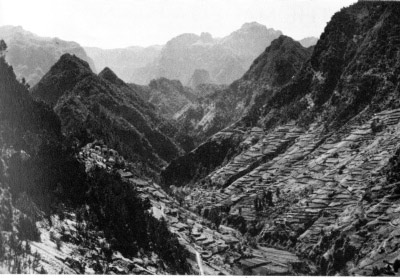Veal kidneys Duke of Clarence style, or, implausibly, ‘Rognons de Veau, Duc de Clarence.’
The Clarence in question must have been George III’s third son, later William IV; he is the most famous of the royal figures to hold the non-hereditary honorific, and the timing of his life is right for the style of the recipe. This version originates, we are told by Noël Cossart in Madeira: The Island Vineyard, with two Americans, Florence Aaron and Paula Peck. It is difficult to find much information about Aaron, but Peck was the celebrated author of two cookbooks during the 1960s, The Art of Fine Baking and The Art of Good Cooking. Although Mark Bittman is an unabashed admirer of Good Cooking, it has become relatively obscure. Fine Baking, however, remains a standard text. Peck was a student, then colleague and friend of James Beard who not only escaped the inauthentic Francophilia of her times but also wrote with a grace and clarity unusual for any era. It is all the more ironic, then, that Island Vineyard presents this good recipe named for English royalty under a French title. For four; may be halved without deleterious effect.
 1 Tablespoon unsalted butter
1 Tablespoon unsalted butter- 2 veal kidneys, cored and cut into ½ inch slices
- salt and pepper
- another 2 Tablespoons unsalted butter
- 2 diced carrots
- 24 tiny onions (see the notes)
- 2 cups sliced mushrooms
- 2 bay leaves
- 1 teaspoon dried thyme
- 3 Tablespoons minced parsley
- 1 cup Sercial or Rainwater Madeira
- ½ cup beef or veal gravy (see the Notes)
Preheat the oven to 350°.
- Season the kidney slices with salt and pepper. Melt the butter over high heat in a heavy ovenproof pot, sear the slices quickly and remove them from the pot.
- Reduce the heat to medium and melt the remaining butter in the pot, then cook the carrots, onions and a Tablespoon of the parsley until the vegetables barely soften.
- Add the kidneys, mushrooms, bay, thyme and ¾ cup of the wine to the pot, give a tight cover and bake it for 1 ½ hours.
- The wine now should only just cover the kidneys; if you see more than that amount, remove the kidneys and reduce the liquid on the stove over high heat.
- Stir in the gravy (and replace the kidneys if you had removed them), bring the stew to a boil, then add the remaining parsley with the rest of the Madeira. Bring the stew back to the briefest imaginable boil, check for salt and pepper, and serve with all possible haste.
Notes:
-As usual the Editor wishes to remind her readers that Bird’s Eye frozen baby pearl onions (once thawed) are a good product that eliminates a lot of blanching a peeling.
-Peck/Cossart blanches the kidneys first instead of searing them, an unnecessary step that denies a layer of flavor to the stew--unless your diners are kidneyphobes, in which case you should not serve them the duke’s dish anyway.
-The Editor has taken other liberties with the original recipe, doubling the lonely carrot, tripling the stingy allotment of onions, adding a bay leaf and quadrupling the dose of thyme, which in our case is dried; it stands up to the long baking better than fresh. The original version also specifies Rainwater alone.
-If you do not have any gravy, jury rig a batch by whisking a teaspoon of flour into a teaspoon of bubbling butter before pouring on ⅔ of a cup of stock (it will reduce to the required amount) with a little Kitchen bouquet and simmering it for a few minutes while the stew bakes. Alternatively open a can of Campbell’s beef consommé (a Thing We Like™); the gelatin will thicken as it cools. If taking the route of the can go easy on the salt; undiluted consommé is loaded with it.
-The recipe, and another one from Vineyard Island, entails a certain mystery: Who supplied the French? Both of them originally appeared in an article called “A wine that shines from soup to nuts” that Aaron and Peck wrote for House Beautiful magazine, but Cossart omits any date or number for the issue. We suspect him rather than the women; our search for a culprit continues.
-The other recipe from “soup to nuts” is good too, and also appears in the practical. It is for a dish of celery braised in Madeira.
-Cossart includes a number of his own recipes in Island Vineyard. One of them, for Ham with Madeira sauce, represents a model of elegant concision and merits quoting in full:
“Slices of cooked ham Madeira
Vegetables of choice grated cheese
Warm slices of cooked ham in a shallow Madeira lake. Serve with a tinned or fresh macédoine of vegetables, over which cheese has been grated.”
There it is, that French again, within an adaptable formula for larder food on a night when you are caught short on ingredients but the weather is too brutal for leaving the house. Another if minor mystery: Whys does ‘grated’ fail to rate an initial capital letter from Cossart?

